Glasgow and Renfrew District Railway
Introduction
This railway is partly open between Shieldhall Junction and the Deanside Transit depot. The branch has not seen traffic for several years.
Dates
Portions of line and locations
This line is divided into a number of portions.
Cardonald to Renfrew
The main line carrying passengers, minerals and goods between Cardonald and Renfrew following a course close the the Clyde. At Renfrew the line turned south to serve the industry developing in the area to the south of Renfrew, following the River Cart a little inland. At Renfrew south there was a connection to the existing Paisley and Renfrew Railway at Renfrew south station, alongside the Renfrew Porterfield terminus.
This was a three way junction approached from Cardonald Junction to the south.
...
See also
Shieldhall Branch (Glasgow and Paisley Joint Railway)
This was an island platform station with a station building with canopies on all sides. Access was from the north end by a flight of stairs from a road overbridge carrying Old Govan Road / Old Renfrew Road.
...

Ewan Crawford //1988
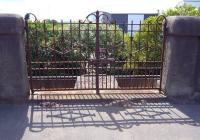
Colin Miller 05/07/2009
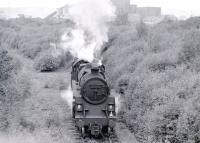
Colin Miller //1966
This was an island platform station with a goods yard on the west side, approached from a loop on the west side of the station. Access to the station was by a subway at the north end (the station was to the south of Station Road). The station building was canopied. The King's Inch, for which the station is named, was to the north.
...
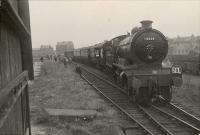
G H Robin collection by courtesy of the Mitchell Library, Glasgow 03/05/1952
This signal box was in Renfrew, controlling access to a looped headshunt for a short line north, on a tight curve, to Lobnitz's Engineering and Shipbuilding Works and Simons' London Works. The headshunt was approached from the Glasgow direction (the east) and on the north side of the line. The signal box was located in the 'V' between the main line and the branch curving north. The box was ...
More detailsThis was a two platform terminus directly across Porterfield Road from Renfrew South, on the north side of the road. The terminus was built within the considerable Babcock and Wilcox Works to the south of Renfrew on the east bank of the White Cart Water.
...
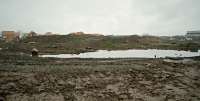
Ewan Crawford //1998

G H Robin collection by courtesy of the Mitchell Library, Glasgow 08/05/1953
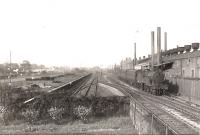
G H Robin collection by courtesy of the Mitchell Library, Glasgow 08/05/1953
King George V Dock Branch
This was a three way junction approached from Cardonald Junction to the south.
...
See also
Shieldhall Branch (Glasgow and Paisley Joint Railway)

Ewan Crawford 19/05/1987
This dock is on the south bank of the River Clyde. Although it has lost its railway connection via Shieldhall Yard, it remains open.
...
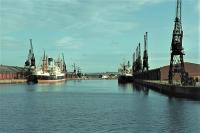
Brian Haslehust /07/1964

Ewan Crawford 26/09/2009

Ewan Crawford 20/05/1987
A passenger station was developed at the King George V Dock during the Second World War. ...
More details
Renfrew Harbour Branch
This was an island platform station with a station building with canopies on all sides. Access was from the north end by a flight of stairs from a road overbridge carrying Old Govan Road / Old Renfrew Road.
...

Ewan Crawford //1988

Colin Miller 05/07/2009

Colin Miller //1966
This was a coal fired power station, later converted to burn oil. It was on the north side of King's Inch Road and served from the east by sidings from the Clyde Navigation Trust's Renfrew Harbour siding of the Glasgow and Renfrew District Railway. Trains entering the power station crossed the road on the level.
...
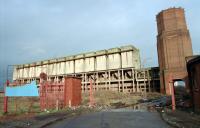
Ewan Crawford //1998
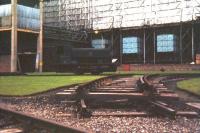
Colin Miller /11/1970
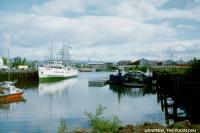
Colin Miller //1988
Deanside Transit
This single lead junction is just west of Cardonald station. Its most recent purpose was to reach Deanside Transit.
...
See also
Glasgow and Paisley Joint Railway
Shieldhall Branch (Glasgow and Paisley Joint Railway)
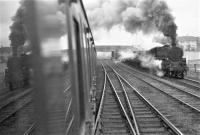
Robin McGregor 01/07/1965
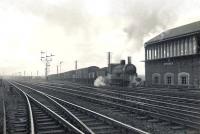
See
G H Robin collection by courtesy of the Mitchell Library, Glasgow 09/06/1959
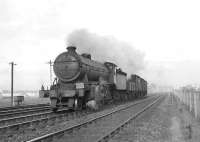
G H Robin collection by courtesy of the Mitchell Library, Glasgow 09/06/1959

Ewan Crawford 27/11/2011
This is a rail served transit depot near the M8, King George V dock, and Braehead shopping centre in Glasgow, just west of Cardonald and north of Hillington East. It is owned by Russell Logistics. The depot was noted for its four 08 shunters in Russell livery (initially light blue, later lilac).
...
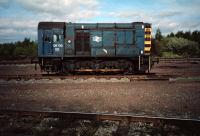
Ewan Crawford 20/05/1987

Ewan Crawford //1988
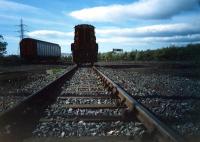
Ewan Crawford //1987

Ewan Crawford //1987
This was an island platform station with a station building with canopies on all sides. Access was from the north end by a flight of stairs from a road overbridge carrying Old Govan Road / Old Renfrew Road.
...

Ewan Crawford //1988

Colin Miller 05/07/2009

Colin Miller //1966
Shieldhall Branch
A re-invigorating of this existing branch with a new goods yard and connection to the Linthouse Shipyard and, at the north end, a connection west to the King George V Dock lines.
This former goods yard site is on the west side of the Queen Elizabeth University Hospital. With little difficulty the branch could be re-opened as a passenger line from Cardonald Junction to serve the hospital. The trackbed is intact including the M8 closing the trackbed by bridge.
...
See also
Shieldhall Branch (Glasgow and Paisley Joint Railway)
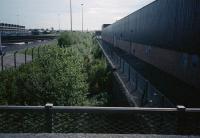
Ewan Crawford 19/05/1987
This was the shipyard of Alexander Stephens and Sons, opening in 1870 when the company relocated from the Kelvinhaugh Slipdock and yards on the east coast to Govan. It was west of the Fairfield Shipyard. The berths were on the south bank of the River Clyde and faced downriver. Opposite were those of the Clydeholm Shipbuilding Yard on the north bank. Unlike the neighbouring ...
More detailsSee also
Shieldhall Branch (Glasgow and Paisley Joint Railway)













